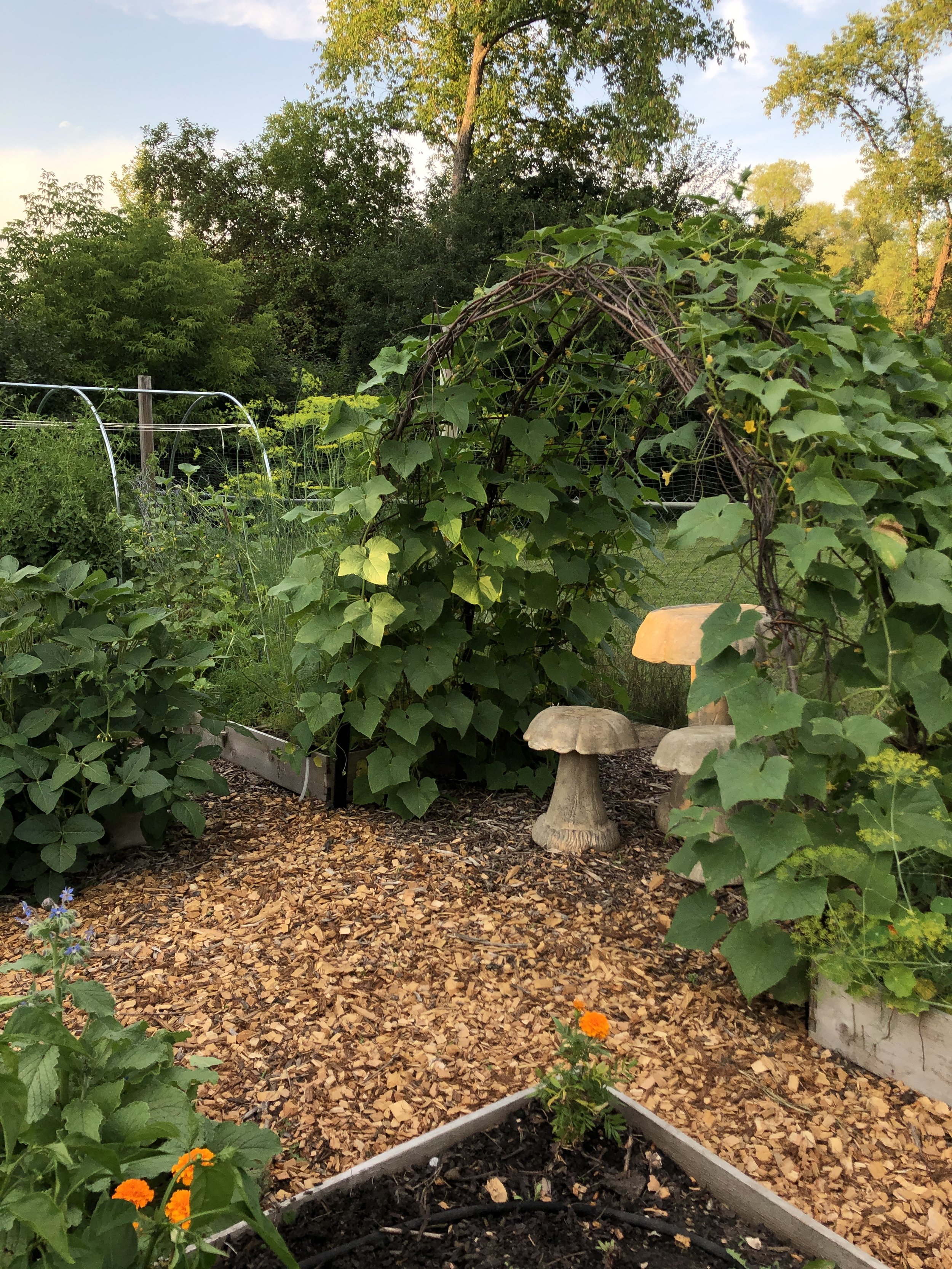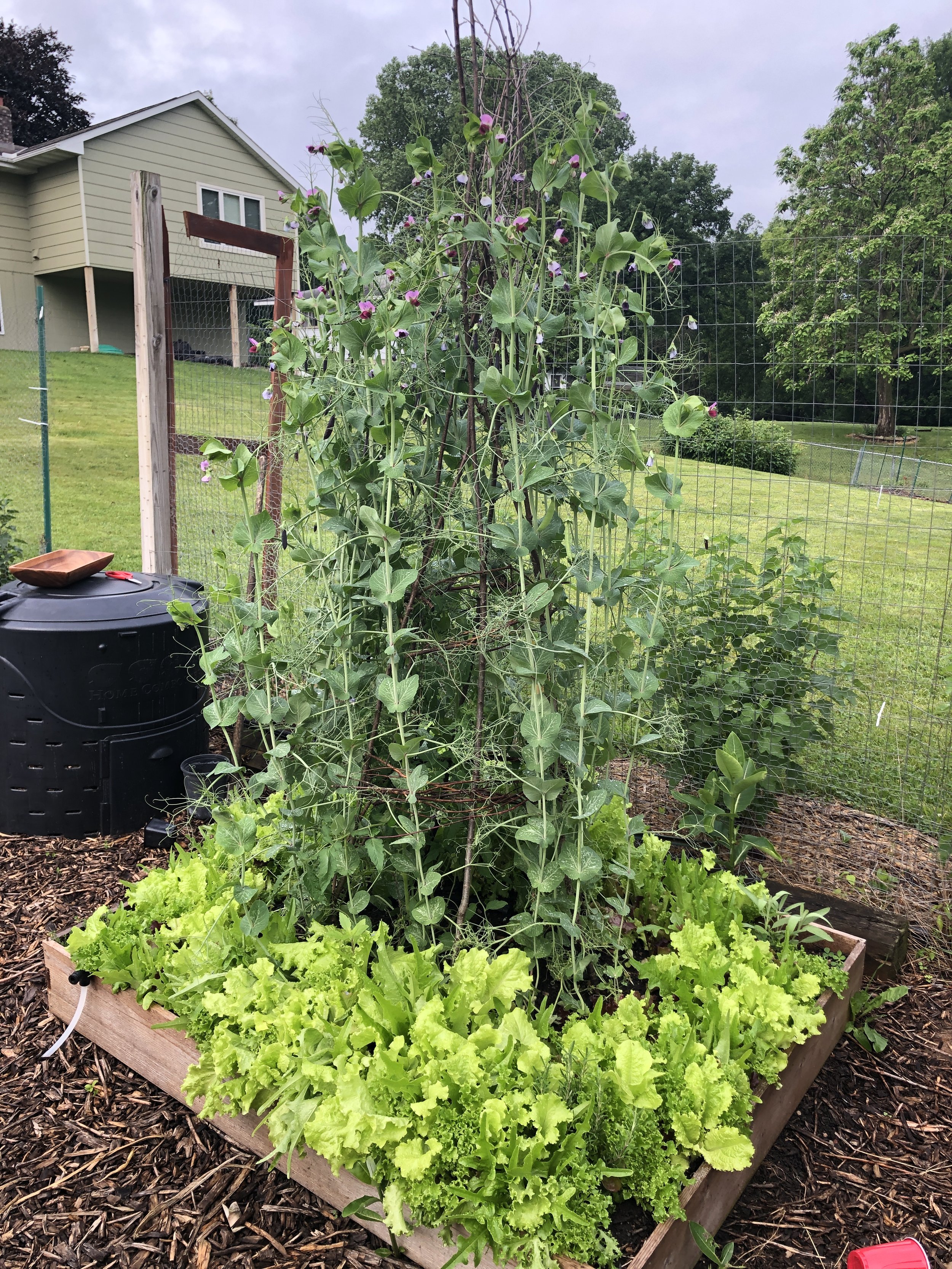If you’ve been wondering how to support your climbing plants in a sustainable and economical way, this post is for you. There are many types of garden structures that can be used to support plants in the garden. Popular choices included flat trellises, arbors, obelisks, arch trellises and pergolas. Permanent, sturdy trellises will need to be used for perennial plants like grapes or kiwi vines. But annual vegetables can grow on supports that last just a season or two before needing to be refreshed. These are the types of natural structures we’ll be covering in this post. But first, we’ll cover the benefits of using support structures and what plants will do best on them.
Why use garden supports?
Make better use of your space:
While some plants (like cucumbers, squash and melons) will happily sprawl across flat ground, you’ll be able to make much more use of your garden space by allowing them to grow vertically rather than horizontally.
Encourage healthier growth:
Growing vertically also allows you to reduce insect damage and disease by providing air circulation and keeping your plants off the ground where disease can spread quickly.
Easier harvesting and healthier fruit:
With vertical growing, you get the benefit of having your plants closer to your line of sight so you can easily spot and harvest when it’s time to do so. It’s also worth noting that growing vertically allows some fruits like cucumbers to grow straighter and cleaner, keeping them out of the dirt and looking more attractive.
What types of plants need support structures?
Anything that climbs (or can climb) will be happiest on a structure in your garden. While this list isn’t exhaustive, below are some of the most common edible plants that would benefit from a vertical support structure.
Peas
Pole Beans
Squash
Melons
Cucumbers
Cherry Tomatoes (not actually a vining plant, but can be guided and attached to a trellis)
Nasturtium (edible flowers and leaves)
Grapes
Hops
When to build your structures
While you can build these structures at any time, early spring is a great time to collect flexible wood that doesn’t need to be stripped of its leaves. If you wait until the ground has thawed but before everything leafs out, you can gather what you need and get it built before your plants go in the ground. This allows you to utilize the natural resources you have available and plan your space well before planting time.
Here are four ways to get free materials to make your garden structures:
Cut down saplings that are growing in your yard where they shouldn’t be. This is a great time to clean up any areas of your yard where unwanted young trees like to grow.
Use flexible branches from your late winter tree trimming/pruning. You’ll get the added benefit of healthier trees and fruit from your pruning efforts, and then get to use that wood to grow more food!
Harvest any natural materials you may have access to like wild grape vine or dogwood. Even better, clear out invasive plants like bittersweet vine and buckthorn trees. While you should always ask permission when harvesting on property not owned by you, you can be sure that no one will miss this noxious plants!
Ask your neighbors if you can help them clean up their yard by pruning their trees or cleaning out any small unwanted trees on their property. You get the materials you need for free with the added benefit of being a good neighbor.
How to build your structures
Below we cover how to build an obelisk and an arched trellis, but you can use these same methods to craft any structure your imagination can come up with! Always start with a nice supply of long pieces of flexible wood that will suit the size structure you want to create.
Obelisk
These obelisks are built by anchoring the vertical pieces straight into the ground. Since the ground is soft and muddy in the spring, it is easy to work with and does a great job holding everything in place. Here are the basic steps:
Start by sinking long, vertical pieces into the ground 10”-12” apart in a circular shape.
Join the pieces at the top and either secure with a piece of twine or twist them around each other in a braid-like fashion and they will hold just as well, if not better!
Add in horizontal supports every foot or two by weaving in and out of the vertical pieces in a circle. Go around a few times until you feel that the piece is sturdy. These lateral supports will provide more anchors for your climbing vines and give overall stability to the structure.
The process is more an art than a science. You will need to work with the pieces you have and let them shape your final project. Watch the video below for an overview of how we built an obelisk using buckthorn and dogwood.
Here is that same obelisk mid-season, covered in purple Sugar Magnolia snap peas:
Arch Trellis
While an arch trellis can definitely be anchored using the same method as the above obelisk (vertical pieces straight into the ground), the following describes how to use PVC and rebar for sturdier support. This method is helpful for larger structures that have a lot more pieces involved, and also has the added benefit of helping the structure last a bit longer, being the wood will not rot as quickly as it would in the ground. You will need:
Flexible branches (young wood). Ideally 8’ or longer.
2” diameter PVC pipe, cut into 8” lengths
2’ rebar
See the gallery below for step-by-step directions on how to build an arch for your garden:
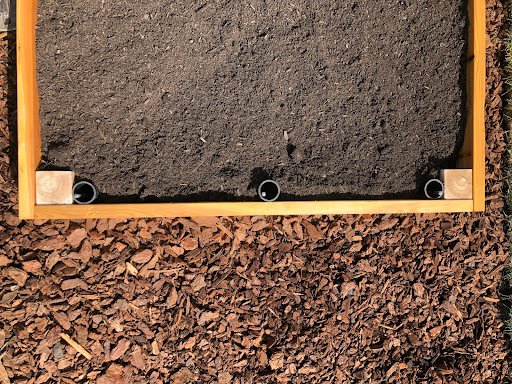

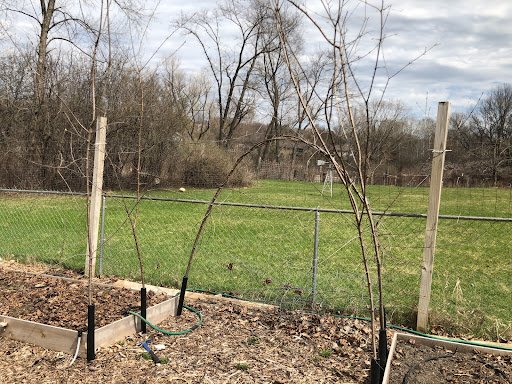
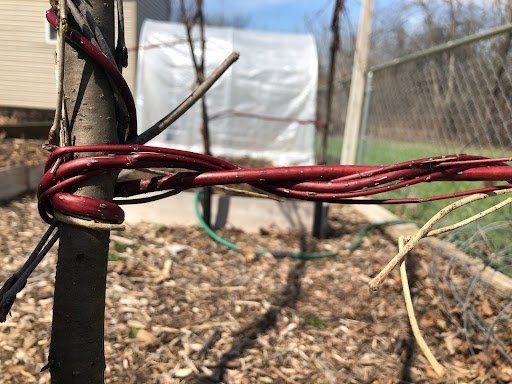

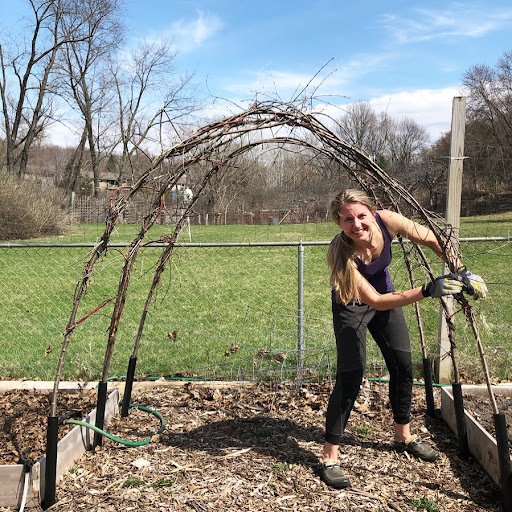
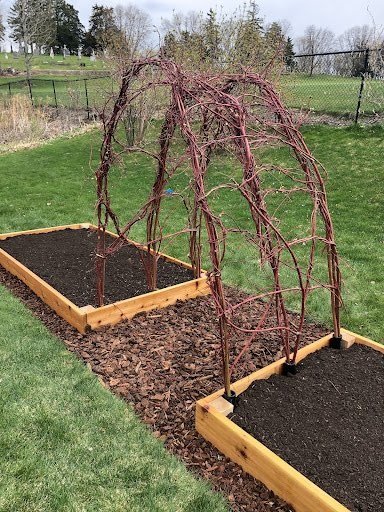

Of course, there are many more options for garden structures that will work in your garden if these ideas aren’t for you. We would love to help you design your space and figure out what would work best for your dreams! Below is a sample of some of the structures we have installed in past client gardens - if you’d like some help with your garden, contact us today!










